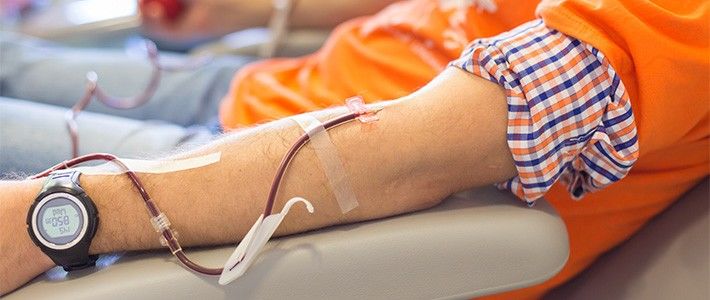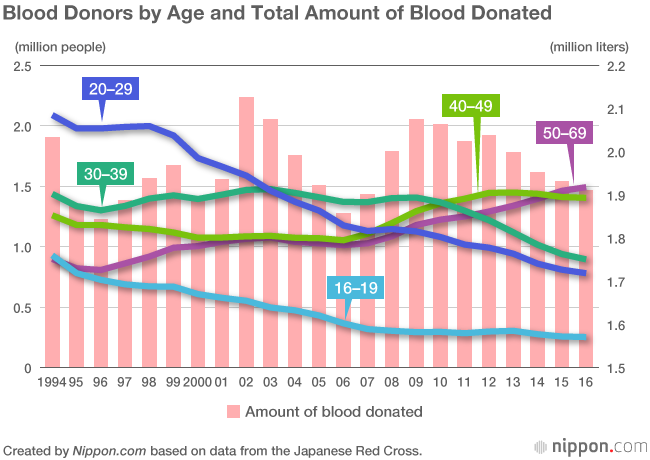
Tech Helps Maintain Japan’s Blood Supply as Young Donors Drop
Society- English
- 日本語
- 简体字
- 繁體字
- Français
- Español
- العربية
- Русский
World Blood Donor Day, established by the World Health Organization is celebrated every June 14 on the birthday of the Austrian physician Karl Landsteiner, who was awarded the Nobel Prize in 1930 for his discovery of the ABO blood group system.
Data collected by the Japanese Red Cross Society shows that there were 4.83 million blood donors in fiscal 2016. While there is an overall rise in donors aged 40 and over, the number of younger people giving blood is declining. The decrease among people in their twenties is particularly stark, with only 780,000 donors in fiscal 2016 or one-third the level in fiscal 1994, when there were around 2.1 million twenty-something donors. This decrease outpaces the population decline for that age bracket over that same period of time due to Japan’s shrinking birthrate.

The total amount of blood donated every year is also declining, but Japan still has enough to manufacture all of the blood products used for domestic transfusions. Advances in endoscopic surgery and other medical technologies that limit the amount of blood lost during surgery help ensure Japan has a sufficient supply.
At the same time, however, the trend of younger generations donating less blood has raised concerns about the future, especially in light of the increase in elderly people requiring many blood transfusions, and the shrinking base of young people who can donate blood. The Ministry of Health, Labor, and Welfare is focusing on educating young people about the situation, such as through its effort to distribute to high schools easy-to-understand information about the blood-donation system and its significance.
(Translated from Japanese. Banner photo: © Pixta.)